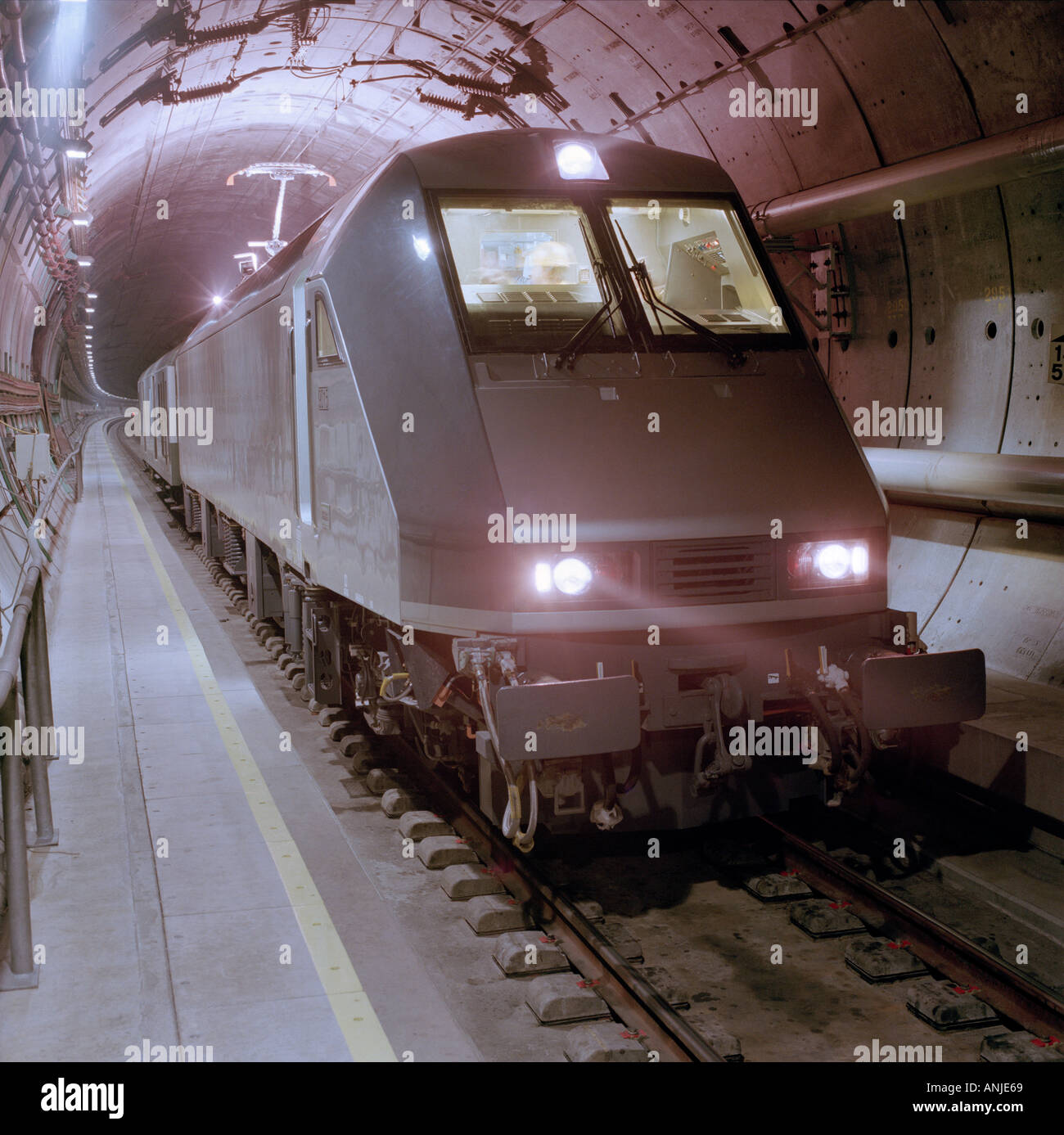Eurotunnel Shuttle Train travelling in a Channel Tunnel rail tunnel, 40m under the seabed.

Image details
Contributor:
qaphotos.com / Alamy Stock PhotoImage ID:
ANJE69File size:
99.7 MB (5.5 MB Compressed download)Releases:
Model - no | Property - noDo I need a release?Dimensions:
5909 x 5899 px | 50 x 49.9 cm | 19.7 x 19.7 inches | 300dpiDate taken:
2 November 1993Location:
40m under seabed in a Rail Tunnel between England and France.More information:
The Eurotunnel shuttle locomotives are amongst the largest and most powerful in the world. A complete train (750m long) has a locomotive at each end, sharing the workload. A single locomotive, in an emergency, has sufficient power to pull a complete train on its own and two working locomotives, together with their complete train, can push another failed shuttle train to safety. The Channel Tunnel is one of the wonders of the modern world. It is thirty-two miles long at an average depth of 45 metres below the sea-bed, the longest undersea tunnel and the second longest rail tunnel in the world (only the Seikan Tunnel in Japan is longer). It was built between 1987 and 1994 by Anglo-French consortium TransManche Link and is owned and operated by Anglo-French Eurotunnel plc. It opened for business in late 1994, offering services including a shuttle train for car, coach and freight vehicles, a Eurostar high-speed passenger service linking London with Paris and Brussels and a rail freight service. The tunnel boring machines were specially designed for excavating the chalk marl rock which lies beneath the seabed along the tunnel route. Digging the tunnel took 15 thousand workers around 170 million man hours over 7 years with tunnelling happening simultaneously from both ends. The Channel Tunnel consists of three parallel tunnels. There are two rail tunnels carrying trains to and from the UK to France and a smaller access tunnel served by narrow rubber-tyred vehicles and connected by transverse passages to the main tunnels at regular intervals. It allows maintenance workers access to the tunnels and provides a safe route for escape during emergencies.